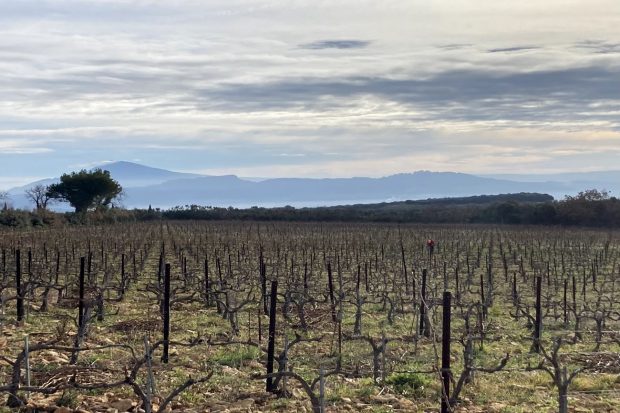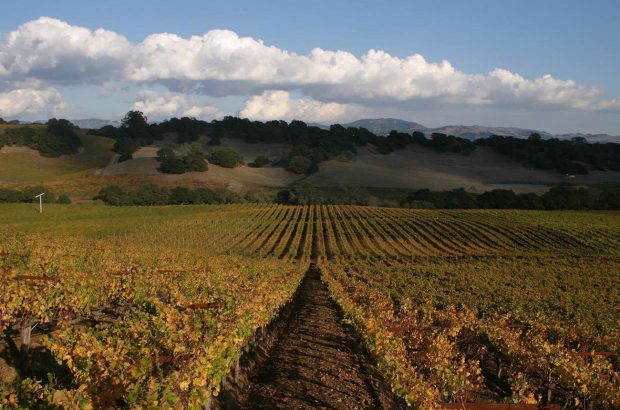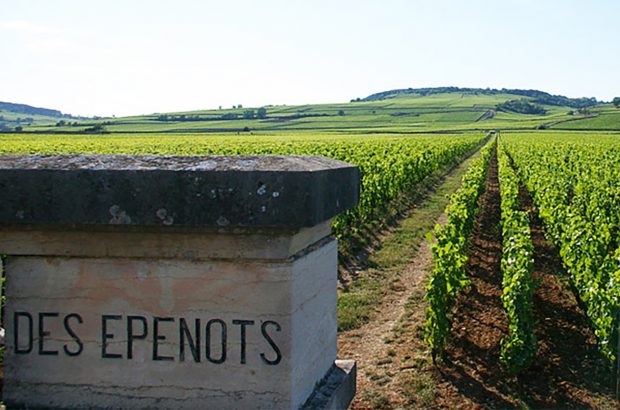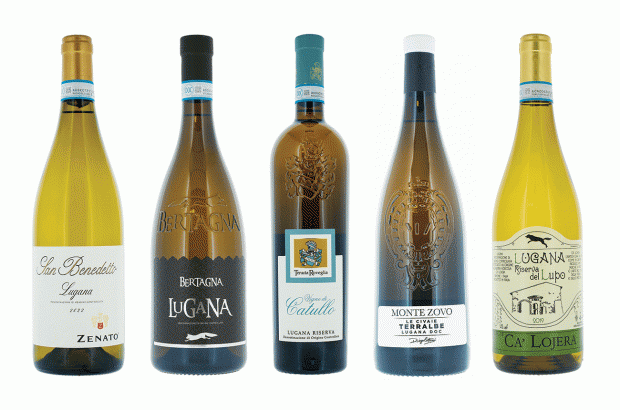Greek wine growers may have indulged us and planted Chardonnay, Sauvignon Blanc, Cabernet Sauvignon and the rest of the grape tribe; and their wines may well be the height of New York fashion, but the truth is that they are largely unpronounceable and a tad on the mysterious side.
We know we ought to love them, but the mere fact that Manhattanites have learnt their idiosyncrasies doesn’t make us feel any more comfortable. It’s the grapes, of course, that hold the answers; but if you want to understand what Greek wine is really about, it is not the aforementioned varieties you should be trying, but Xinomavro, Aghiorghitiko, Assyrtiko, Moschofilero, Roditis and Mavrodaphne…
The author and spreader of the good word on Greek wine, Nico Manessis, has developed an excellent system for learning how to pronounce the apparent horrors. So now the excuse: ‘Well, I can’t even pronounce it in my own head’, is no longer going to cut ice. And once this is mastered, you’ll find that the rest is relatively easy.
Greek grapes are, in fact, very simple mirrors of their terroir; and so an explanation of aromas, flavours and the actual wines themselves are no more complicated than a geography field trip. North to south. And to make matters really straightforward, the Greek wine-growing authorities have adopted the same system as the French, with specific grapes (often just one) for each appellation: just as there’s Pinot Noir in Burgundy, there’s Xinomavro in Naoussa. The growers themselves are none too pleased about these restrictions but, for now, they make the job of understanding Greek wine an awful lot simpler.
Greek white wines to drink this summer
Cantankerous Greek
Starting off in the north, Macedonia is the coolest region. This is the true Balkan country, home to bear and boar (still), oak and pine forests, mountain streams and mills. Tucked into the hills is ‘Naoussa’, the appellation where Xinomavro is king. Xinomavro is a bit like Pinot Noir – a grape full of minerally strawberry fruit, crisp acidity and fine tannins. It is also decidedly cantankerous in the vineyard – rather prone to cloning and diluteness if it isn’t watched carefully.
The two grape varieties are not related, but at the Ktima Kyr-Yannin winery, Mihalis Boutaris likes to develop the analogy. ‘My father likes burgundy. It isn’t that he doesn’t like Bordeaux – he adores Haut-Brion – but he wants more intricacy and much more of a challenge,’ he explains.
On its own, the Xinomavro grape has great intricacy; otherwise it seems to miss the point. At Kyr-Yanni, the Boutaris make some fine Merlot (a vin de pays), but when this is blended with Xinomavro ‘for femininity’, the result is of cherries and strawberries sitting rather clumsily together.
Single-vineyard ‘Ramnista’ Xinomavro, on the other hand, is a revelation – raspberry and strawberry sweetness on the nose, and some fleshy, minerally flavours following through. What marks it as authentically Greek is an extra hint of dark raisin and a whiff of smokey coffee. What marks it as a ‘cool climate’ wine is its delicate framework and mineral complexity.
As with Pinot, winemakers need to watch out for stark tannins. ‘To me, tannins are like nails and wood,’ says Boutaris. ‘You have to make sure they go together well and aren’t scratchy and separate.’ The Boutaris suspect Xino’s tannins – when phenolically ripe in good vintages (94-97 in 2000) – can take maceration up to three weeks.
Journey south past Athens, and the Peloponnese is the next quality vineyard area (a round tour takes you to appellations Nemea (pictured), Mantinia and Patras). This is land of vast, dry Mediterranean hills, made of red soils and marl on limestone, outcrops hiding churches and villages, settlements that developed from the governing Turks hundreds of years ago, encouraging a population known for wiliness and cunning.
Hotter climate
Nemea’s only permitted variety is the black Aghiorghitiko grape, which makes anything from rosé to rich, ebullient red wines. Pretty much like a Greek Cabernet Franc, in fact. Georges Papaioannou makes a ‘Super- Loire’ version called Ktima Papaioannou, which has a black peppery clove and incense nose, followed by broad-fruited, rich flavours on the palate, firm, with velvety-smooth tannins. It’s bigger than a Loire wine and richer than a Macedonian Xinomavro, but hen the climate is hotter.
Where Papaionannou alternates between Loire and Bordeaux styles, ‘Big George’ Skouras down the road at Gymno goes from Bordeaux to Napa – that’s also the impression you get driving up to his new-age winery.
George Skouras would like things in Greece to be more ‘New World’ than they are. ‘The law is a horse’s arse,’ he says with an effective mastery of the English language; but ultimately he agrees that Aghiorghitiko is by far the best grape for the region. ‘Our business is Nemea,’ he says, ‘but we use cosmopolitan varieties as a passport. They have been good for Greece as they closed the doors on foreign wines coming in, and they also opened up people’s’ minds.’
Skouras’ 1998 ‘Nemea’ (produced from Aghiorghitiko) is supple and plummy on the nose – supple from its year in oak (one-fifth new), and with dense plum and blackcurrant flavours that reflect the good slopes of part of this district. The ‘grande cuvée’ wine from further up those Gymno slopes, is the most Napa-ish of all and takes on a vanilla and coffeeish finish from new oak (winemaking tricks are the same in Greece as they are anywhere else). As well as the familiar, New World roundness, there is an extremely pleasing crispness to the fruit. Definitely worth leaving the valley floor for.
Climb further into the hills to the sub-AC Asprokambos (650m) or White Valley, and the temperature drops. More humidity and foliage (sloes, brambles, even oak trees replace cypress and olive), and Aghiorghitiko reverts to Loire-like tendencies.
The Octana Winery (brand new with the 2000 harvest) adds to these a blueberry note with fresh acidity, while at the Gaia estate you begin Aghiorghitiko lessons with the basic ’14-18h’ (a gently cherryish rosé named after the number of hours it spends on skins to get its colour) and build up to ‘Notios’ – denser cherry and mineral wine with a touch of liquorice on the finish.
Right at the top of the range is Gaia’s Estate ‘vin de garde’, which shows all the skill of winemaker Yannis Paraskevopoulos: rich, dense fruit, as appealing on the palate as any top New World wine, yet with a twang of minerals that can only be Greek. Not too ripe, not overblown, just interesting. This is the wine that’s put Gaia on the world wine map, and it should do the same for Aghiorghitiko.
So if Greece is really ‘getting modern’, why persist with such an unpronounceable name for this understandable grape? Why not make it easier and translate it directly to ‘St George’? ‘People have to learn the reality of Greek wine,’ says Paraskevopoulos. Take it on the chin.
Travel to the centre of the Peloponnesian peninsular, higher up into the hills, and the surroundings are no longer Mediterranean but decidedly Balkan again, even if there is the odd ski resort.
A hint of pear drops
Here lies the prized cool-climate appellation Mantinia. Mantinia’s grape is Moschofilero, and local people can’t get enough of it. ‘We could sell 15% more than we have,’ exclaims grower Yannis Tselepos. Moschofilero is a blanc de gris grape which has black skin yet white, lightly aromatic juice and was thought to be a cousin of Gewürztraminer (the theory is that it arrived with the Bavarian kings in the 1840s).
It is very easy to understand why this mistake was made as the two are not only similar in colour but also have similar aromatics. Tselepos makes wine from both grapes. While Gewürz has the almost classic rose-petal aromas, Moschofilero also has something of these, but is also distinctively pearish in flavour. Tselepos mantinia from the 2000 vintage has soft pear and pineapple on the nose, pears again on the palate, and a pervading crispness along the lines of Riesling – it is tangy and refreshing, and much more refined than its supposed cousin. The Greeks adore Moschofilero, and with very good reason.
Curving the northern Pelponnesian coastline is the next appellation, ‘Patras’. Roditis, Mavrodaphne and Muscat are the trio of permitted varieties here, and Roditis, without any doubt, is the star (the other two are mostly found in sweeties).
If you meander up from the coastline, where Muscat and Mavrodaphne make bigger, warmer wines, to the folding valleys of the Côtes d’Egion, Roditis Alepou shows its true potential. Take care not to mistake this for an American hybrid – instead it is something steely and Germanic, and so called for its foxy colour.
At the Oenoforos winery, which is perched on the hillside like a monastery, Anghelos Rouvalis is a true believer. ‘I want to show the uniqueness of Greek grape varieties, especially Roditis. But we need critical mass before we can really get going,’ he explains.
In his Asprolithi (White Stones), Roditis is crisp and creamy, with eucalyptus and dry herbs on the nose, followed by an expansive ‘palate-waking’ burst of flavour. There is more ‘Rieslingness’ about this grape than with Moschofilero, and it’s a fantastic one for a hot summer’s day drinking. Here, and at the Antonopoulos winery, flavours run from melon to lemon, to kumquat oil and orange peel, all delicate but ever so insistent.
South again, out into the Aegean sea, Santorini’s permitted grapes are the three ‘A’s: Assyrtiko, Athiri and Aidani Aspro. The first is renowned for retaining its crisp acidity despite the heat and tantalising lack of moisture – on Santorini it barely rains, and the moisture that the vines get is that which condenses as the strong winds that sweep the island cool the land. Assyrtiko is the star, while Aidani lends semi-aromatic delicacy, and Athiri rounds out any angularity.
Vinsanto territory
The wines vary in strength and style from light, fragrantly wild-herby aperitifs to heady, biscuity sage, vanilla and aniseed mouthfuls. Of course, you can always leave the grapes in the sun for longer to get Vinsanto. This is the power-packed wine you might expect from the hot, arid climate; but the fragile conditions (lean volcanic soils and vines cowering into basket coils flat to the ground to fend off the winds) can promote the development of a decidedly delicate side to the grapes, too. Paris Sigalas definitely makes the finest fragrant style wines. As for the more heady style, a glorious 1895 essence shows just how very fine Greek wine can really be.
Greece has 250 of its own grape varieties. And they all have equally mind-bending names – this part of the world is the cradle of all wine growing, so it is unsurprising that there are as many as there are.
As more new, virus-free clones are becoming available, many winemakers are naturally keen to work on these authentic vines. Karrapappas (which is known as ‘the Black Priest’) is a rather fascinating dark grape but there are only three of these plants, and of Kidonitsa (‘the little Quince’) there are few more.
We should count ourselves lucky. Now is a good time, before these new plantings proliferate, to get to know Greek wine in its simplest form!















